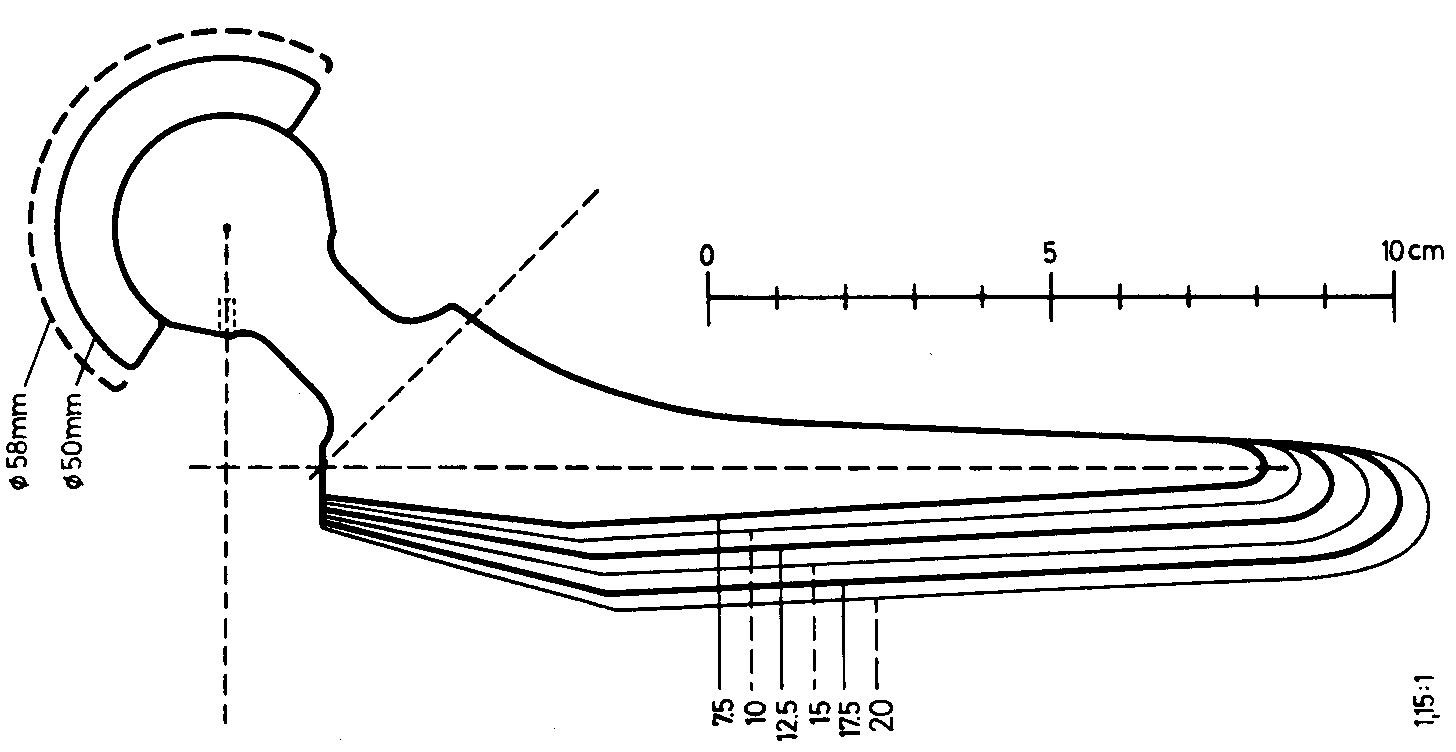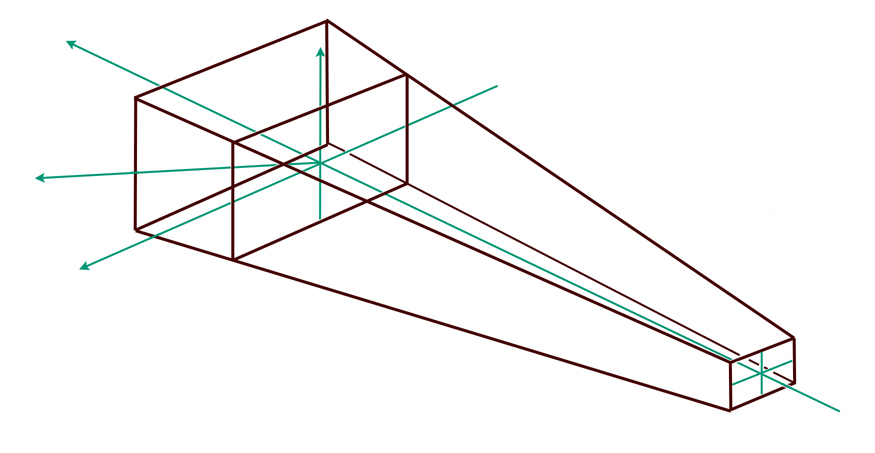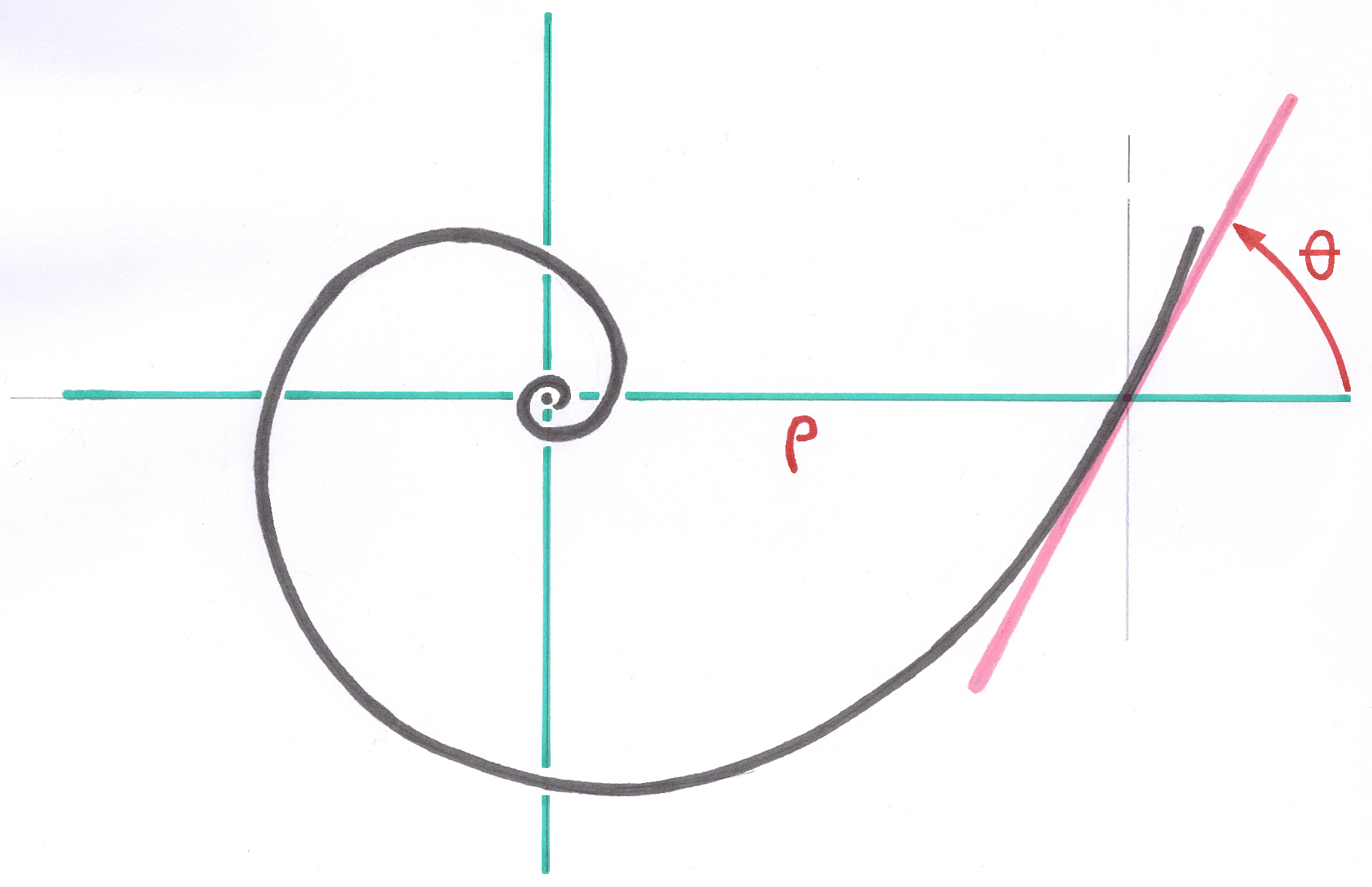4.2. The Pyramidal Base Form
4.2.1. Summary
The femoral stems with Geometric Anchoring must initially be ready to constitute a true conical junction with the rectified osseous sleeve.
The cementfree stems AlloClassic and SL Plus, are built starting from a pyramid with rectangular base, which belongs geometrically to the family of the cones. This form of anchoring zone will make it possible to obtain fixing in the bone by junction of the conical type.
This Pyramidal Base Form will undergo modifications of low amplitude with the Thickness Corrections and thereafter the Calcar Polynomial.
4.2.2. The origin of the Pyramidal Base Form
In the hour which followed a participation in an operation in Nice, in March 1984, I abruptly had the comprehension of the three-dimensional defect of the stems Zweymüller first generation, and I immediately drew the theoretical diagram which I would have wished for these stems. If these stems had owned the property of a pyramid, intraoperative instabilities which I had just observed would not have occured.
In the days following, the idea of the need to recast Zweymüller stems on strictly geometrical bases appeared to me necessary. This idea was reinforced by the problems of scaling sizes that I had seen over the previous three years.
4.2.3. Application to the stems which I designed thereafter
I started to reflect, to study the improvements which I intended to propose one day for the renovation of the first generation system and to work out mathematical and computational methods for implementing them.
For the future AlloClassic stems on which I worked at home throughout the year 1984, I made correspond exactly the zone of anchoring to the shape of the base pyramid.
During eight years which followed, I supplemented and refined this simple pyramidal form by the additive functions of the Calcar Polynom. I applied this more advanced form to stems SL Plus.
4.2.4. The Growing Center
The skeleton of stem SL Plus has the shape of a truncated pyramid limited in proximal by a rectangular contour located at the origin of the coordinates and simultaneously at the intersection of the longitudinal axis with the oblique axis of the neck of the prosthesis. The origin of the coordinates has a great importance in the design of the prostheses which I have created because it is the starting point of the various basic vectors which will define the expansion of the implant according to the sizes in all the directions of space 3D, just as one poetically imagines it for the “Big-Bang”, but moreover with independent “speeds” in each direction. I called this point the Growing Center.
4.2.5. Previously, neither Base Form nor Growing Center
No base form, whatever it is not used for the majority of the drawn implants of the market and without definition of a Growing Center to define the various sizes. Each size is designed independently of the others.
The point of intersection between the longitudinal axis, when it exists, and the axis of the neck is rarely considered and is not regarded as an important construction point.
Even Even when I participated in the drafting of the European Standards on the prostheses, it was not possible to me to make define a logical relation neither between the longitudinal axis and the stem itself, nor between the axis of the neck and its intersection with the longitudinal axis.

4.2.6. Definition of the Pyramidal Base Form
The Pyramidal Base Form is initially defined by the length of the Anchoring zone chosen for the intermediate size of the series. This vector will be normalized, in the direction of the longitudinal axis, by the specific Growing Factor to each size.

Then, the proximal width is defined by a perpendicular vector also leaving the Growing Center and is adapted to each size by the Growing Factor of the widths.
The thickness of the proximal section of the anchoring zone of the middle size is obtained by a Form Factor applied to the width. I thus obtain the shape of the rectangle of the section. This thickness is not seized like data defined in millimetres. It is calculated by the program.
Following the application of the method of Thickness Corrections( 4.8. ), the form of this section will vary slightly and continuously, from the distal section of the smallest size of the series until the proximal section of the largest size. Consequently, the stems of big size are rather flattened and the stems of small size have a section which approaches the square.
All the Pyramidal Base Forms of all the sizes satisfy the Principle of Ascending Interlocking( 4.7. ).
Only the principal angle of face of the Pyramidal Base Form is seized in the form of a data. The angles between anteroir and posterior faces are calculated automatically by the software. Their result, which it is useless to know at the beginning, is the geometrical consequence of the Form Factor and the treatment by the Method of the Thickness Corrections.
For the stems calculated with the Calcar Polynom, the Fixation Function and Separation Function bring to the base Pyramidal Base Form light variations but continuous all along the stem, these angles are neither constant nor measurable on the implant.
